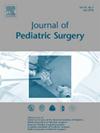围手术期输血对新生儿术后预后的影响。
IF 2.4
2区 医学
Q1 PEDIATRICS
引用次数: 0
摘要
导言:围手术期输注红细胞(RBCT)可能会对新生儿术后效果产生负面影响。本研究比较了输血和未输血新生儿术后 30 天的预后:美国国家外科质量改进计划(NSQIP)儿科数据集(2021-2022 年)用于分析新生儿手术后 RBCT 与 30 天发病率和死亡率之间的关系。RBCT定义为手术期间或术后72小时内的输血。倾向评分匹配比较了输血和未输血的新生儿。二次分析检查了匹配新生儿的结果,以及术前血细胞比容(Hct)不同十分位数的相对贫血和死亡率趋势:研究期间共有 2687 名新生儿接受了手术,其中 14% 接受了 PRBCT。在匹配队列中,输血新生儿的 30 天死亡率较高(26.2% 对 13.8%,P 48 h(60.3% 对 43.7%;P 40%))。输血新生儿的死亡率在 Hct 33% 以上出现明显差异,Hct 越高,死亡率越高:结论:围手术期 RBCT 与较差的术后发病率和死亡率有关,尤其是术前 Hct 水平较高时。研究类型:回顾性比较研究:研究类型:回顾性比较研究:证据等级:III。本文章由计算机程序翻译,如有差异,请以英文原文为准。
Impact of Perioperative Blood Transfusion on Postoperative Outcomes in Neonates
Introduction
Neonatal postoperative outcomes may be negatively affected by perioperative red blood cell transfusion (RBCT). This study compared 30-day postoperative outcomes between transfused and non-transfused neonates.
Methods
The National Surgical Quality Improvement Program (NSQIP) Pediatric dataset (2021–2022) was used to analyze the association between RBCT and 30-day morbidity and mortality after neonatal surgery. RBCT was defined as transfusion during or within 72 h after surgery. Propensity score matching compared transfused and non-transfused neonates. Secondary analyses examined outcomes among matched neonates with relative anemia and mortality trends across deciles of preoperative hematocrit (Hct).
Results
Overall, 2687 neonates underwent surgery during the study period, and 14 % received PRBCT. In the matched cohort, 30-day mortality was higher in transfused neonates (26.2 % vs. 13.8 %, p < 0.0001). Transfused neonates also had increased rates of wound dehiscence (2.2 % vs. 0.9 %; p < 0.005), mechanical ventilation >48 h (60.3 % vs. 43.7 %; p < 0.0001), cardiac arrest (3.8 % vs. 2.3 %; p = 0.022), and septic shock (3.8 % vs. 1.1 %; p < 0.0001). Matched neonates with similar rates of PRBCT had comparable morbidity and mortality, regardless of preoperative Hct (<35 % vs. >40 %). Mortality diverged significantly above Hct 33 % for transfused neonates, increasing steadily with higher Hct.
Conclusions
Perioperative RBCT is associated with worse postoperative morbidity and mortality, particularly at higher preoperative Hct levels. Relative preoperative anemia alone is not a significant predictor of outcomes, supporting restrictive transfusion practices in perioperative neonatal care.
Type of Study
Retrospective Comparative Study.
Level of Evidence
III.
求助全文
通过发布文献求助,成功后即可免费获取论文全文。
去求助
来源期刊
CiteScore
1.10
自引率
12.50%
发文量
569
审稿时长
38 days
期刊介绍:
The journal presents original contributions as well as a complete international abstracts section and other special departments to provide the most current source of information and references in pediatric surgery. The journal is based on the need to improve the surgical care of infants and children, not only through advances in physiology, pathology and surgical techniques, but also by attention to the unique emotional and physical needs of the young patient.

 求助内容:
求助内容: 应助结果提醒方式:
应助结果提醒方式:


